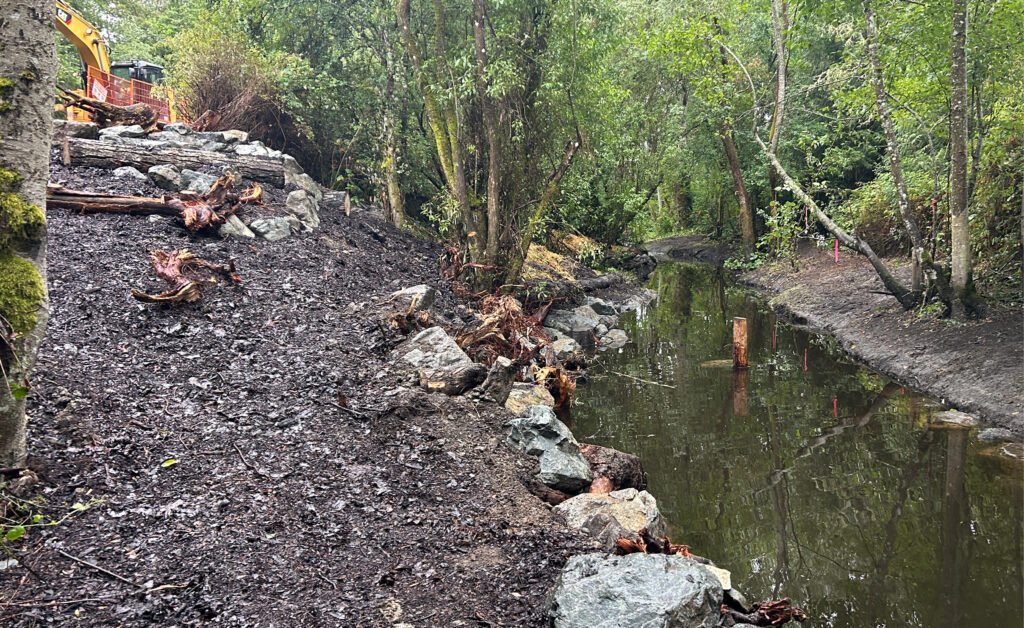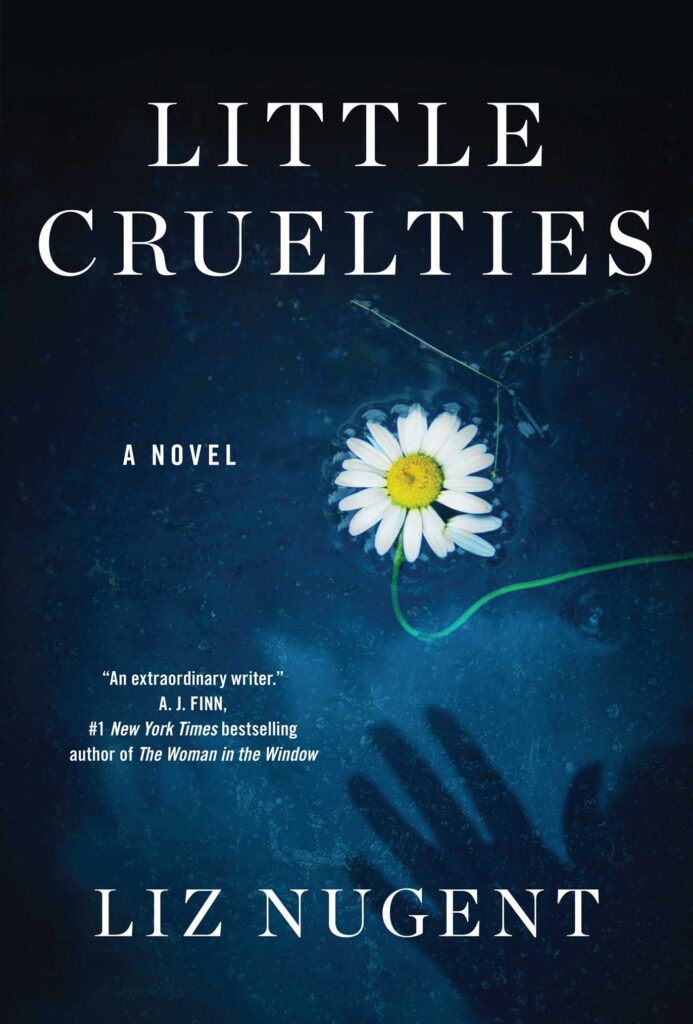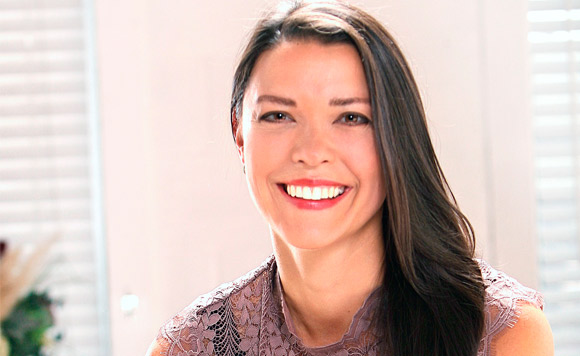Words Tina Kelly
Photo Peninsula Streams & Shorelines
Witnessing salmon return to a creek you’ve helped restore is magical. The staff and volunteers of Peninsula Streams & Shorelines (PSS) know this feeling well.
Of course, it’s less about magic and more about partnerships, planning and hard work. For more than 20 years, the non-profit PSS has identified, assessed and restored local streams and shorelines. Through collaboration with the District of Saanich, PSS has been tackling the Colquitz River, one section at a time, for the past 10 years.
The Colquitz River watershed weaves through and under roads, neighbourhoods and familiar places. A system of more than two dozen brooks and creeks – many hidden within the urban landscape – connect Elk/Beaver Lakes, Swan Lake, Rithet’s Bog, Blenkinsop Lake and Viaduct Flats with the Colquitz River.
If you’ve driven Highway 17 from Uptown north to Elk Lake, you’ve travelled over more than one link in this watershed. Imagine, over time, the runoff, the debris and the overall impact of urban life on waterways. The stream structure becomes altered and the water polluted; the suitable habitat for fish is diminished. Gabo Creek runs under the highway connecting Rithet’s Bog with Colquitz River.
Down a “blink and you’ll miss it” trail off Glanford Avenue, PSS Senior Aquatic Biologist, Katrina Adams, introduced me to Gabo Creek and the efforts being made at the current site. Summer is what they call their “fish window” – a time when work on the creekbed has the least impact on fish: they’re not spawning, they’re not hatching and they’re not on their spring outmigration. It’s a carefully orchestrated endeavour that includes relocating fish and wildlife to other parts of the stream, arranging a stream bypass and draining the portion to be restored. The muck, silt and garbage, at places a metre deep, is removed and the creekbed rebuilt with the complexity and structures that will help salmon thrive. Spawning gravel, as well as logs and boulders, are placed strategically to provide hiding habitat and create deeper pools for refuge and access to cooler water.
Restoration isn’t limited to instream habitat. Robust riparian zones are crucial for supporting the health of a freshwater ecosystem. This wide swath of lush vegetation provides many ecological functions including stabilizing the streambank, filtering nutrients from the water, trapping sediments, reducing stream energy flow, supporting biodiversity, providing needed shade and one of my favourite salmon stream facts – feeding young salmon; insects that fall into the water from overhanging vegetation are a key food source. The riparian restoration will take place this fall; invasive species are removed and local species – alder, maple, cedars, salmonberry, red osier dogwood – will be planted.
When restoration on this 170-metre portion of Gabo Creek is complete, PSS will move on to another designated section of the watershed. Piece by piece, they’ll make a difference – an improvement to this urban ecosystem, the biodiversity and the salmon.
Projects like Gabo Creek, however, are not one and done. Ongoing monitoring assesses the success and resilience of restoration and includes fish counts. Previously restored portions of the watershed, including another 200 meters of Gabo Creek, have successfully welcomed back an increased number of Coho salmon.
Peninsula Streams & Shorelines welcomes volunteers. Visit www.peninsulastreams.ca to learn about the society, their projects and how you can become involved in the magic. Saanich Parks also accepts volunteers for this and other restoration projects.




